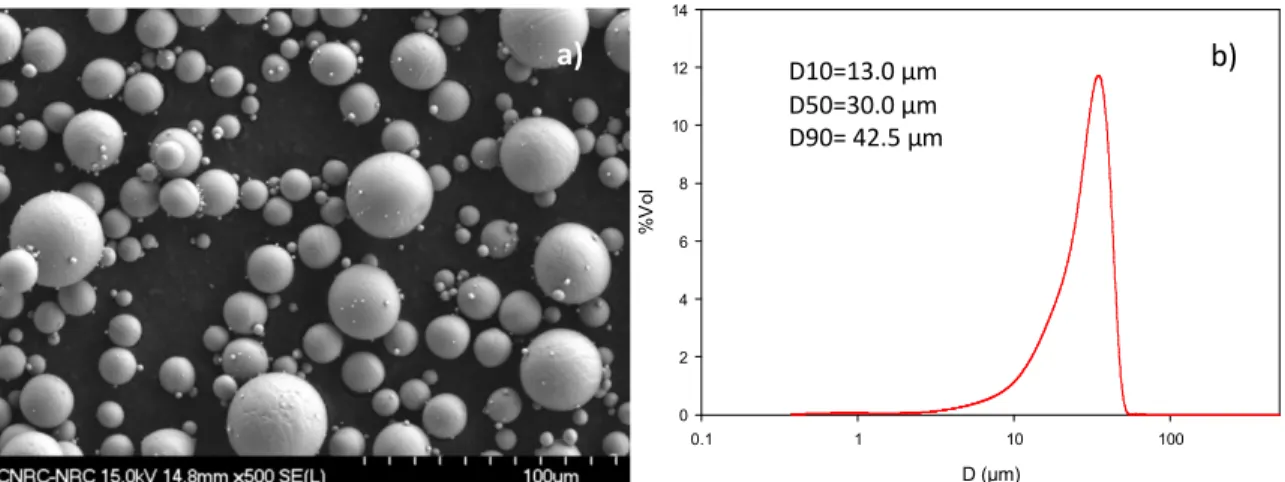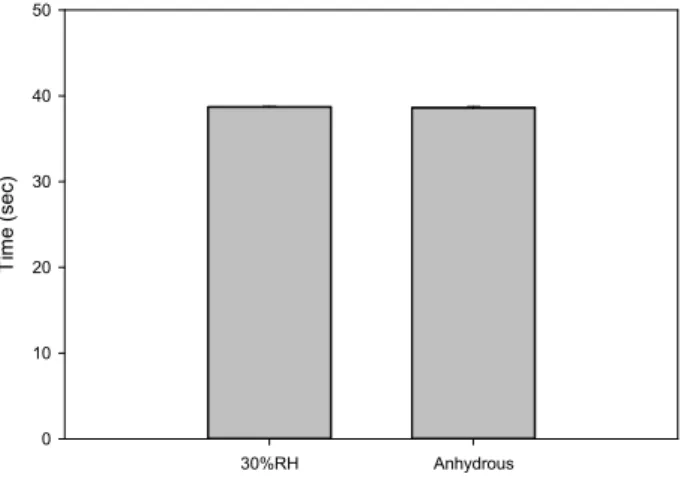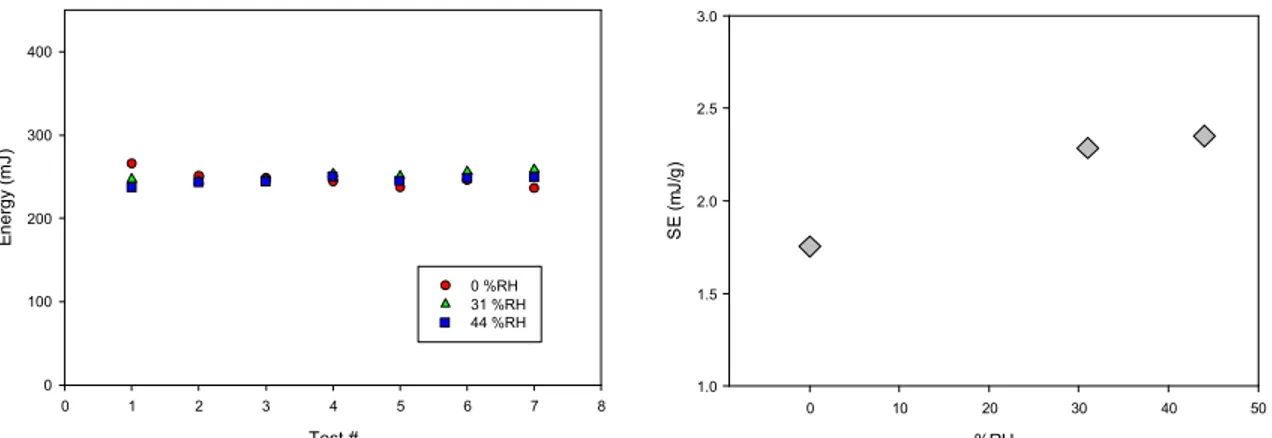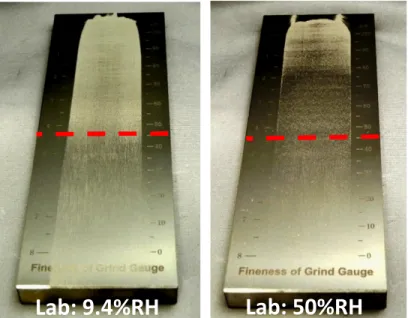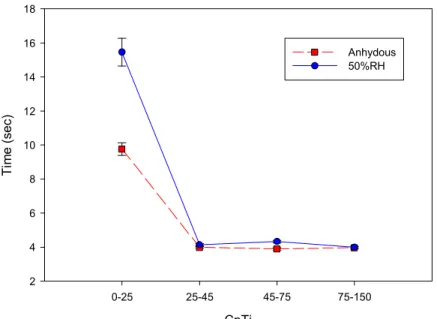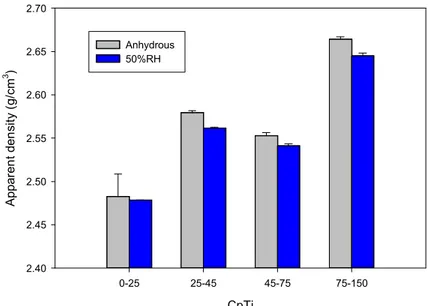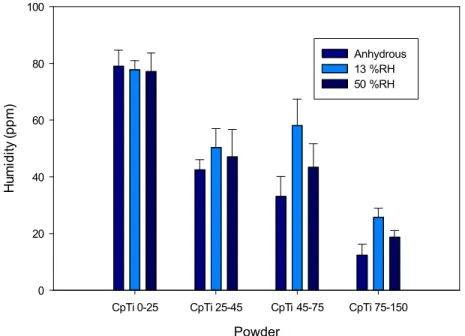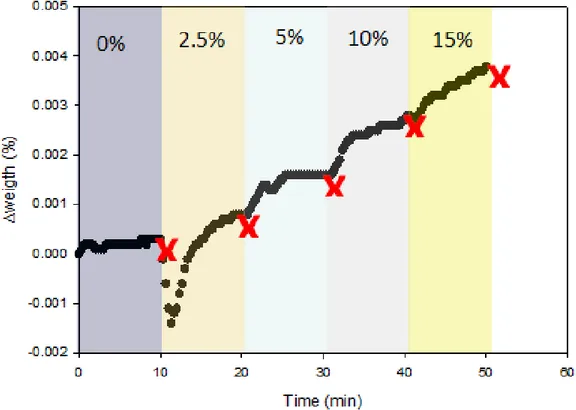Publisher’s version / Version de l'éditeur:
Vous avez des questions? Nous pouvons vous aider. Pour communiquer directement avec un auteur, consultez la première page de la revue dans laquelle son article a été publié afin de trouver ses coordonnées. Si vous n’arrivez pas à les repérer, communiquez avec nous à PublicationsArchive-ArchivesPublications@nrc-cnrc.gc.ca.
Questions? Contact the NRC Publications Archive team at
PublicationsArchive-ArchivesPublications@nrc-cnrc.gc.ca. If you wish to email the authors directly, please see the first page of the publication for their contact information.
https://publications-cnrc.canada.ca/fra/droits
L’accès à ce site Web et l’utilisation de son contenu sont assujettis aux conditions présentées dans le site LISEZ CES CONDITIONS ATTENTIVEMENT AVANT D’UTILISER CE SITE WEB.
Proceeding of the Additive Manufacturing with Powder Metallurgy Conference
2019, 2019-06
READ THESE TERMS AND CONDITIONS CAREFULLY BEFORE USING THIS WEBSITE. https://nrc-publications.canada.ca/eng/copyright
NRC Publications Archive Record / Notice des Archives des publications du CNRC :
https://nrc-publications.canada.ca/eng/view/object/?id=d4f8be86-6437-4dca-aac7-579cc044e594 https://publications-cnrc.canada.ca/fra/voir/objet/?id=d4f8be86-6437-4dca-aac7-579cc044e594
NRC Publications Archive
Archives des publications du CNRC
This publication could be one of several versions: author’s original, accepted manuscript or the publisher’s version. / La version de cette publication peut être l’une des suivantes : la version prépublication de l’auteur, la version acceptée du manuscrit ou la version de l’éditeur.
Access and use of this website and the material on it are subject to the Terms and Conditions set forth at
Metal powder flowability: effect of humidity and impact on the
reproducibility of the measurements
Metal Powder flowability: Effect of humidity and impact on the reproducibility of the measurements
L.P. Lefebvre1, J.Dai1, Y.Thomas1, Y.Martinez-Rubi2
1National Research Council Canada, Boucherville, Quebec, Canada, J4B 6Y4 2National Research Council Canada, 100 Sussex Drive, Ottawa, Ontario K1A 0R6
Abstract
Additive manufacturing (AM) community recognizes the importance of powder flowability on the productivity and the quality of printed parts. However, there is no agreement on what constitutes a good flow. Indeed, machine users have reported that powders appearing to be identical may exhibit different spreading behavior in the machines. Flowability depends on different factors and significant variability has been reported when evaluating the flow behavior of powders. Thus, there is a need to develop reliable and relevant methods to quantify powder flow. One of the important factors affecting flowability is the relative humidity. However, the impact of humidity on the flowability of AM powders has not been well documented and current flowability standards are not clear on how to take this effect into account. This paper presents the impact of relative humidity on the flowability of titanium powder using various tests. The effect of relative humidity is not clear as the sensitivity of the measurement techniques to moisture uptake varies significantly. This paper also compares different methods to measure the water content of a titanium powder and the impact of measurement conditions on the results.
Intro
Many fabrication processes, including additive manufacturing (AM), are relying on powder flowability to ensure the stability of the process and part quality. For powder bed, powder flowability significantly affects build rate and productivity. Part quality relies on the characteristics of the powder layer (e.g. reflectivity, conductivity, density, uniformity) as they impact the absorption of energy from the beam (laser or electron), the conduction of heat, formation of the melt pool as well as the formation of defects [1,2,3,4,5].
Flowability is not an intrinsic property of powders but describes their behaviour when they flow or are transferred during handling or processing. It depends on different factors including the powder
characteristics (e.g. particle size distribution, sphericity, presence of satellites, density, surface interaction, etc.), environmental conditions (humidity, temperature and atmosphere) as well as flow conditions (i.e. shear rate, nature of the material in contact with the powder, etc.). Indeed, depending on the fabrication process, powders may behave differently when exposed to different flow conditions: plastic, inertial, fluidized and entrained flow [6].
There is a need to quantify powder flowability and associate the values measured with their behavior in various fabrication processes for different reasons (quality control, certification, simulation, R&D and product development) [7]. Consequently, it is important to characterize the powders using techniques representing the flow conditions encountered in the application. There is nevertheless a need to develop standard methods, even if they do not perfectly replicate the flow conditions in specific processes. The method should, however, allow to measure similar behaviour in different laboratories under similar
conditions and help assess the behaviour of the powder when used in specific processes. Ideally, the method must be simple, robust and widely available.
One of the most common methods to measure flowability is the Hall flow meter. The method is covered by various standards (MPIF [8], ASTM [9] and ISO [10]) and extensively used in the industry because of its simplicity and accessibility. One of the limitations of the method comes from its inability to quantify the flowability of cohesive powders. Other funnel flow meters have been developed to compensate this limitation (Carney, Gustavsson). These techniques reproduce relatively well the way the powder flows in an open funnel. However, the methods may not correspond to the conditions encountered in various processes (ex.: powder flowing from a close funnel or in a cavity with no vent, powder bed, etc). Various other methods have been developed to extend the range of flow conditions that can be
characterized. B.H. Kayes [11,12] studied the avalanching behavior of powders using a rotating disc filled with powder. The flowability can also be evaluated by measuring the cohesion between particles using shear tests (ASTM D6467 [13] and D3080/D3080M [14]) or rheology approaches by measuring the resistance of a powder to flow (ex.: resistance seen by an impeller when moving through a cylinder filled with powder). Commercial systems were recently developed [15,16, 17,18,19] that have generated interest in the powder metallurgy (PM) community.
Recent studies have shown that large variations may be observed when flowability tests are conducted in different laboratories [20,21]. These studies were conducted with fine powders, known to be sensitive to surface interactions (Van der Walls, electrostatic, capillary). As moisture uptake on powders can affect these forces, it is important to evaluate its effect on the flowability of powders. However there is no standard method to measure the water content of metallic powder. Indeed, various standards exist to evaluate moisture in various medium [22,23,24,25] but their validity for quantifying the water content in metallic powders has not been assessed.
This paper presents the impact of relative humidity on the flowability of titanium powders having different particle size distribution using the following methods: funnel flow (i.e. Hall and Carney), rheology (Freeman FT4), aavalanche (GranuDrum), spreadability and apparent density. To better understand the results, different methods to measure the moisture uptake were used and compared.
Experimental procedure
All tests were conducted with a plasma atomized commercially pure titanium powder (CpTi from AP&C, a GE additive company). Powders with different particle size distributions (0-25µm, 0-45 µm, 25-45µm, 45-75µm and 75-150µm) were obtained by screening and tested to evaluate the effect of particle size on the results. Scanning electron micrographs of the powder were taken using a Hitachi S-4700 scanning electron microscope. Particle size distribution was evaluated by Laser Diffraction using a Beckman Coulter LS 13 320 system (dry measurements).
Powder flowability tests were conducted in laboratories having humidity level ranging from anhydrous to 50 %RH :
Rheology tests were done using an FT4 instrument from Freeman Technology (a Micromeretics company) using the instrument recommended methodology. The tests were done immediately after pouring the powder out of the bottle and no ‘environmental’ conditioning was used. The FT4 evaluates the resistance of the powder to flow whilst the powder is in motion by moving downwards and
upwards a rotating stainless steel impeller (23.5 mm diameter) in a glass cylinder (borosilicate, 51 mm height, 25 mm diameter) filled with powders. The powder resistance is measured using torque and linear force sensors. The basic flowability energy (BFE) is calculated as the impeller is forcing the powder towards the bottom of the cylinder. The stability tests are done by measuring the flow energy
for 7 identical repeat tests on each sample. The speed of the tip of the impeller was fixed at 100 mm/s. On the other hand, the specific energy (SE) is measured as the impeller is moving upwards and the flow is unconfined. The specific energy (SE) is calculated by dividing the flow energy (average measured during repeat 6 and 7th when the impeller is moving upwards) by the density of the powder (measured with the graduated cylinder of the instrument and a balance).
Avalanche tests were conducted on a GranuDrum using the GranuTools procedure. The cohesive index was measured on 50 ml of 0-45 µm CpTi plasma atomized powder. To assess the effect of humidity, the powder was poured into the instrument cylinders in laboratories having different relative humidity levels. As the cylinder is closed during the tests, the powder is not exposed to the laboratory environment and the laboratory atmosphere has limited effect on the powder once the cylinder is closed.
The spreadability of the powder was evaluated using an Hegman gauge (100 µm). While the method was developed to evaluate the size of the largest particles in liquid suspensions, the gauge was used in this study with dry powder to assess the effect of humidity on the spreadability. The method consisted in putting a small quantity of powder in a grove with a depth varying from 100 µm to 0 µm and spreading the powder (from 100 down to 0 µm depth) with a blade along the grove. The spreadability can be qualitatively assessed by comparing the quality and the formation of defects in the powder layer.
Apparent density was evaluated on powders having different particle sizes in laboratories having different humidity levels (anhydrous and 50 %RH).
The water content of the metal powder was evaluated using different techniques:
The effect of laboratory relative humidity on the moisture uptake was evaluated using a Computrac Vapor Pro moisture analyser (Arizona Instrument). The measurements were done by analyzing the volatile as the powder (2g) in a septum bottle was heated up to 260°C. Moisture was analyzed as driven out of the bottle and carried out by air through a relative humidity (RH) sensor. The test was terminated when the end rate of 0.01 µg of water/s was achieved. The detection limit of the instrument used was 10 ppm.
A gravimetry test was conducted by measuring the weight of the powder (i.e. 100 g), before and after heating the powder at 200°C under vacuum for 1h in an anhydrous lab (to avoid moisture adsorption prior to weight measurement after drying). The weight was measured with a 0.0001g precision balance (Balance Experts Inc.).
Coulometric Karl Fisher tests were conducted by Metter Toledo using a C30SX Karl Fischer (KF) instrument. The samples (10 g per vial) were heated up to 240°C (10 minutes at 240°C) in nitrogen flow of 60 standard cubic centimeters per minute.
Water adsorption/desorption tests were conducted using a DVS instrument from Surface Measurement System. Samples (75-100 mg) were dried at 0 %RH and 110°C for 10 hours before measuring the isotherms. The isotherms were done between 0 and 95 %RH and down to 0% using 0.001%/min equilibrium criterion before switching from one humidity level to the other. Two cycles were conducted and the results reported in this study are only for the 2nd cycle (between 0 and 15 %RH). Results
Figure 1 presents the general appearance and the particle size distribution of the CpTi 0-45 µm powder investigated in this study. The particles are highly spherical with little amount of satellites. The powder is relatively fine with a D50 of 30 µm and 10% in volume of the powder below 13 µm.
D (µm) 0.1 1 10 100 % V o l 0 2 4 6 8 10 12 14 D10=13.0 µm D50=30.0 µm D90= 42.5 µm
Figure 1: a) SEM micrograph and b) particle size distribution of the CpTi 0-45 µm powder investigated in this study.
Figure 2 presents the effect of laboratory relative humidity on the Hall and Carney flowability of the powder. The results were obtained without conditioning the powder prior to the measurements. Both the Hall and Carney flows show that the measurements are affected by the environment and that the effect of moisture uptake is very rapid. Indeed, the Hall and Carney flow tests were conducted immediately after entering the laboratory without conditioning the powder. After measuring the powder in the anhydrous laboratory, the powder was transferred in the 50%RH laboratory and measured immediately after opening the bottle. Finally, the powder was transferred back in the anhydrous laboratory to measure the
flowability once again, without conditioning.
Figure 2: Effect of laboratory humidity on a) Carney and b) Hall flow of 0-45 µm CpTi plasma atomized powder.
These results clearly show that the laboratory environment may impact significantly the measurement of powder flowability. Both the Hall and Carney flow show that the effect is reversible and flowabilities returned to the level they were when the powder is transferred back to the anhydrous laboratory. This indicates that desorption of water may also be very rapid. While the values measured with the Hall flow doesn’t allow to put numbers on the variations, the Carney flow shows that the effect of adsorbed
humidity can be significant. Indeed, the flow rate is more than 2 times slower when the tests are done in a laboratory containing 50% relative humidity. This finding is important as it points out a source of
potential variations if the tests are not done under a controlled environment. It is difficult with these results to determine if the effect of environmental humidity observed is only coming from the adsorption of moisture on the surface of the powder, on the surface on the funnel or a combination of both. Indeed, it
Laboratory Anhydrous 50%RH Anhydrous T im e ( se c) 0 2 4 6 8 10 12 14 16 18 Laboratory Anhydrous 50%RH Anhydrous T im e ( se c) 0 10 20 30 40 50 60 N o fl ow a) b) b) a)
was observed that more powder sticks to the surface of the funnel when the tests are conducted in humid environments.
Tests were conducted with Chinese Emery (reference material for Hall flow measurements) to estimate if the effect of relative humidity could be observed with a reference material. The results presented in Figure 3 shows that the Hall flow time is little affected by environmental humidity (between anhydrous and 30%RH). This suggests that the impact of relative humidity depends on the materials. It also shows that measurements done with the Chinese Emery cannot be used to correct the data to take into
consideration the effect of humidity in the laboratory. Indeed, the Chinese emery is little affected by the environmental humidity and can only be used to monitor deviations of the results coming from the apparatus itself.
Figure 3: Effect of laboratory humidity level on the Hall flow of Chinese Emery (iron aluminum silicate) powder according to ASTM B213-17 standard test method. The emery was dried 1h @ 102°C prior to the measurement of the flowability.
Other tests were conducted to see if the effect of environmental humidity was also observed using other characterization methods. Figure 4 presents results obtained when characterizing a 0-45µm CpTi powder with a rheometer that was transferred in laboratories with different relative humidity levels. The results indicate that the effect of the humidity in the laboratory was minimal on the confined flow energy when the blade was mowing downwards. This finding is different from the results obtained with the Hall and Carney flow (Figure 2). It is believed that this is associated with the stress and flow conditions during the tests. Indeed, the flow stress is relatively high when the blade is moving downwards and the effect of moisture uptake on the interparticle adhesion should be much lower than the stresses encountered during the tests. When the measurements are done as the blade is moving upwards (specific energy), the flow stresses is much lower and the impact of relative humidity could be observed (Figure 4b). This clearly shows that the effect of environmental humidity depends of the deformation conditions of the powder.
Laboratory 30%RH Anhydrous T im e (s e c) 0 10 20 30 40 50
%RH 0 10 20 30 40 50 S E ( m J/ g ) 1.0 1.5 2.0 2.5 3.0
Figure 4: Effect of laboratory humidity on flow energy measured on 0-45 µm CpTi plasma atomized powder using an FT4 rheometer.
Figure 5 presents the effect of laboratory humidity on the cohesive index measured using the avalanche behavior of the powder at a rotation speed of 2 and 30 rpm. In the GranuDrum system, the powder is not affected by the laboratory atmosphere during the tests (because the cylinder is closed during the tests). However, the powder was exposed to laboratories with different humidity levels during the transfer of the powder into the cylinder of the equipment. Despite the fact that the Hall, Carney and rheology tests (Figures 2 and 4) suggest that the powder moisture uptake is very rapid in a laboratory having 50%RH, the impact of the humidity cannot be observed during the avalanche tests with the titanium powder characterized in this study. While the effect of moisture on the avalanche behavior of non-metallic powders was previously reported [26], the moisture uptake on the titanium powder seemed to be
insufficient to impact the avalanche behavior and lead to an increase of the cohesion as measured by the instrument.
Figure 5: Effect of laboratory humidity level (humidity where the powder was transferred in the cyclinder) on cohesive index measured on 0-45 µm CpTi plasma atomized powder using a Granudrum avalanche rheometer.
The effect of laboratory relative humidity was also evaluated on the spreadability using a Hegman gauge (100 µm). The tests indicate that environmental humidity significantly affects the spreadability of the
Test # 0 1 2 3 4 5 6 7 8 E n e rg y (m J) 0 100 200 300 400 0 %RH 31 %RH 44 %RH Speed (RPM) 0 5 10 15 20 25 30 35 C o he si o n 0 5 10 15 20 25 30 45%RH (Run 1) 45%RH (Run 2) 45%RH (Run 3) Anhydrous (Run 1) Anhydrous (Run 2) Anhydrous (Run 3)
powder. Indeed, the spreading behavior is significantly different when the tests are done in the laboratories with 9%RH and 50%RH. In the 9%RH laboratory, the layer is relatively uniform until the gauge depth reaches 45µm, which represents the size of the largest particles in the powder. Beyond this limit, some particles in the powder are too large and are scraped by the blade, leaving some rays in the powder layer up to a point where most of the particles are too large to be spreaded and there is practically no powder left in the layer. In the 50%RH laboratories, defects in the spreaded layer are observed well before 45 µm, which means that some powders are agglomerated and stick together forming agglomerates larger than 45 µm. While not perfect, the method is simple and provides an indication of the behavior of the powder when spreaded in thin layer.
Figure 6: Effect of laboratory humidity level on the spreadability measured on 0-45 µm CpTi plasma atomized powder using a Hegman gauge (0-100 µm, the dotted line representing the 45 µm depth corresponding to the largest
particles in the powder characterized).
Figure 7 presents the effect of particle size distribution on Carney flow sensitivity to relative humidity. The results indicate that the sensitivity of the flow to humidity is significantly affected by the particle size. This can be explained by the fact that the surface increases significantly with a reduction of the particle size and moisture uptake is more important. In addition, the gravity of the particles become less important and less significant relatively to interparticlar forces as the particle size is reduced.
Figure 7: Effect of particle size distribution (CpTi plasma atomized powder) on the Carney flow sensitivity to the laboratory humidity.
As moisture adsorbed on powder surface may influence interparticle forces, it may also influence other properties beside flowability. Figure 8 presents the apparent density of CpTi with different particle size distribution and shows that humidity in the laboratory may impact the measurements. The effect of relative humidity was observed for most particle size distributions. While the variations of apparent densities are relatively small as compared with the differences of flowability measured, they are statistically significant (beside the data obtained with the 0-25µm where the standard variations were important). Interestingly, while the effect of humidity on Carney flow is more important for the 0-25µm, the effect of relative humidity on apparent density seems to be minimal for that powder. This discrepancy is probably associated with the deformation/flow conditions and forces encountered during the tests (tensions between free falling particles for the Carney flow as opposed to packing of free falling particles for the apparent density) and relative contribution of the different forces (capillary, electrostatic, Van der Walls vs kinetics energy coming from the free falling particles) affecting the measurements.
CpTi 0-25 25-45 45-75 75-150 T im e (s ec ) 2 4 6 8 10 12 14 16 18 Anhydous 50%RH
Figure 8: Effect of particle size (CpTi plasma atomized powder) on the sensitivity of the apparent density to the laboratory humidity.
The results presented above show that the measurement methods have different sensitivity to humidity. While all methods should be sensitive to humidity if the water content in the powder is high enough, not all methods have the capability to show the effect of small differences of water content (coming from short exposure to laboratory environment having different humidity level, as investigated in the present study). The differences of sensitivity observed may come from difference of stress level and deformation conditions during the test as well as the way the index are measured or calculated. During the rheology tests where the blade is moving downwards in the cylinder, the stresses exceeded by far the level of the forces modified by the moisture adsorbed on the surface of the particles. On the other hand, Hall and Carney flow are very sensitive to relative humidity as there is no external force applied on the powder during the test (the only force imposing the flow is gravity). When the rheology test is unconfined (ex.: Hall, Carney, SE), the stress level in the powder is much lower and the effect of humidity is visible. For the avalanche test, it is not clear for the moment if the limited effect of humidity on the cohesive index is caused by the level of stresses and the conditions of deformation during the tests, the interaction of the powder with the cylinder or by the algorithm used to evaluate the cohesive index. Consequently, additional tests should be done to better understand the effect of humidity during those tests.
As moisture uptake may potentially affect the measurement of the flow, the relative humidity should be controlled and recorded, unless the effect of humidity has been proven to be minimal for a given powder and test method. If the objective of a test or experiment is to evaluate potential effects of relative humidity on a process, especially the spreading of the powder, the method used should be sensitive to the water content of the powder within the limit generally encountered in the application.
Figure 9 presents the moisture uptake of CpTi powders having different particle size distributions determined by the analysis of volatiles (Computrac Vapor Pro) as a function of the relative humidity in the laboratories. No conditioning of the powder was done prior to the tests. The results show that the water content increases with a reduction of the particle size and fits in the 20 to 100 ppm range. The reduction of the water content with increasing particle size can be associated with the lower surface area of larger particles. The results also show that the level of water content for each powder are little affected by the environment of the lab, at least if the test is done quickly after sampling the specimens out of the
CpTi 0-25 25-45 45-75 75-150 A pp ar en t d en si ty ( g/ cm 3 ) 2.40 2.45 2.50 2.55 2.60 2.65 2.70 Anhydrous 50%RH
bottle. This finding is surprising considering the observations of the flowability tests presented above. This may be associated with differences in powder handling procedure between the Hall and Carney flow and the humidity measurements (the way the powders are exposed to the laboratory during the different tests). Another hypothesis could be that a very small difference of water content (below the 10 ppm sensitivity limit of the instrument) is sufficient to cause significant variation of interparticle interactions, which becomes apparent on the flow if fine particles are present. Another hypothesis might be that the differences observed are essentially coming from differences of moisture adsorbed on the surface of the instruments.
Powder
CpTi 0-25 CpTi 25-45 CpTi 45-75 CpTi 75-150
H um id ity (p p m ) 0 20 40 60 80 100 Anhydrous 13 %RH 50 %RH
Figure 9: Water content measured (volatile using Computrac Vapor Pro) of CpTi plasma atomized powders having different particle size distributions.
Additional tests were conducted to evaluate the kinetic of adsorption of moisture on the surface of the powder. Figure 10 presents the moisture uptake with time when CpTi 0-25µm powder is exposed to different relative humidity steps in the 0 to 15% relative humidity range (measured with a DVS instrument from Surface Measurement Systems). The results indicate that the weight of the powder sample increases when humidity increases until it reach an equilibrium at a given relative humidity. The time to stabilize after a 2.5 to 5 %RH increase is typically between 5 and 10 min. The amount of water adsorbed on the surface increases with the humidity level. It should be underline that the powder is static during the test and moving the powder and exposing the surface to humidity should increase the
adsorption kinetics (probably one of the reason explaining the different findings obtained with the funnel flow tests and the moisture adsorption measurements).
Figure 10: Kinetics of water vapor adsorption for CpTi 0-25µm plasma atomized powder at different relative humidity stages (measured with a DVS instrument at 25 C, where the relative humidity is increased when the mass uptake is stabilized at a given humidity level).
Water content was evaluated for a specific titanium powder using different methods to validate the accuracy of the results. Table 1 shows that the measured values are all in the same order of magnitude (between 27 and 44 ppm). However, some variations were observed between the different tests. It is difficult for the moment to determine if the differences are coming from the methods or the modification of the water content while the powder were manipulated prior to the measurements. Additional tests should be conducted with more powders to assess the reproducibility, to obtain better statistical results and confirm the differences observed. The results are nevertheless indicative of the level of humidity present in the powder. Thus, methods to be considered for the evaluation of moisture in powders for additive manufacturing should be sensitive enough to measure water content in the 10 to 100 ppm range. While it is not yet possible to assess the impact of water content on the flowability of the powder, the method should be precise enough to discriminate powders having different flow behaviour.
Table 1: Water content evaluated with different methods.
Conclusions
The results presented in this study show that the relative humidity in the laboratory affects the
measurements of the flowability and apparent density of powders. Impact of humidity on the flowability seems to be more important when fine particles (i.e. -25µm) are present. Moisture uptake appears to be
ppm
Vaporpro 44
Karls Fisher 31
very rapid and the effect seems to be reversible for titanium powders (without having to degas the powder, at least when the powder is not exposed to a long period of time to the humidity). Some powder characterization techniques are more sensitive than others to humidity. For examples, Hall, Carney and Hegman gauge tests are all very sensitive while rheometer (FT4) is only sensitive if the stresses during the test is not too high (ex.: unconfined flow). Avalanche appears, on the other hand, to be less sensitive for the conditions and powder investigated in this study.
While flowability standards make reference to the effect of environmental humidity, there is no clear indication on the way to manage it in order to minimise its effect on the variability/repeatability of the results. Flowability of reference materials (Chinese emery) is little affected by humidity and cannot be used to assess the effect of humidity and calibrate the measurements to take into account the effect of humidity. While standards exist to measure moisture in various materials, there is no standard for the measurement of water content of powders for PM applications.
Different techniques could be used to evaluate moisture in powders but their validity and robustness has not been evaluated for metallic powders. As humidity is adsorbed very rapidly on the surface of powder when exposed to environment containing humidity, the effect of laboratory humidity on the results needs to be further investigated. The effect observed in this study seems to be minimal for titanium powders as long as the tests are conducted rapidly after exposing to the laboratory environment. This needs,
however, to be validated with other materials and particle size distributions.
Acknowledgment
The authors would like to acknowledge Shirley Mercier (NRC), Patrick England (NRC) and Malgosia Daroszewska (NRC) who have contributed to the experimental work presented in this paper, Benoit Simard (NRC) for his support and discussion on DVS measurements, Eileen Ross Espiritu and Mathieu Brochu for the support for the avalanche tests, and Bill McGovern from METTLER TOLEDO for the KARL Fisher measurements.
References
1L.I. Escano, N.D. Parab, L.Xiong, Q.Guo, C.Zhao, K.Fezzaa, W.Everhart, T.Sun, L.Chen, Revealing
particle-scale powder spreading dynamics in powder-bed-based additive manufacturing process by high-speed x-ray imaging, Scientific Reports, 8(1),15079, pp. 1-11 (2018).
2S.Vock, B.Klöden, A.Kirchner, T.Weißgärber, B.Kieback, Powders for powder bed fusion: a review,
Progress in Additive Manufacturing, https://doi.org/10.1007/s40964-019-00078-6(2019).
3A.M.Rausch , V.E.Küng, C.Pobel, M.Markl and Carolin Körner, Predictive Simulation of
ProcessWindows for Powder Bed Fusion Additive Manufacturing: Influence of the Powder Bulk Density, Materials, 10, 1117; pp. 1-14 (2017).
4U. Ali, Y. Mahmoodkhani, S.Imani Shahabad, R. Esmaeilizadeh, F. Liravi, E. Sheydaeian, K.Y. Huang,
E. Marzbanrad, M. Vlasea, E.Toyserkani, On the measurement of relative powder-bed compaction
density in powder-bed additive manufacturing processes, Materials and Design,155, pp. 495-501 (2018).
5C.Meier, R.Weissbach, J.Weinberg, W.A.Wall, A.J.Hart, Critical influences of particle size and
adhesion on the powder layer uniformity in metal additive manufacturing, Journal of Materials Processing Technology, 266, pp. 484-501 (2019).
6A. Castellanos, J. Manuel Valverde, A.T. Pérez, A. Ramos,1 and P.K. Watson, Flow Regimes in Fine
Cohesive Powders, Physical Review Letters, 82(6), pp. 1156-1159 (1999).
7J.K. Prescott, R.A. Barnum, On Powder Flowability, Pharmaceutical Technology, 24(10), pp.
60-84+236 (2000).
8MPIF 03, Determination of Flow Rate of Free-Flowing Metal Powders Using Hall Apparatus.
9 ASTM B213-17, Standard Test Methods for Flow Rate of Metal Powders Using the Hall Flowmeter
Funnel.
10ISO 4490 Metallic Powders – Determination of Flow Rate by Means of a Calibrated Funnel.
11B.H. Kaye, Characterizing the Flowability of a Powder Using the Concepts of Fractal Geometry and
Chaos Theory, Particle & Particle Systems Characterization, 14(2), pp. 53-66 (1997).
12B.H. Kaye, J. Gratton-Liimatainen, N. Faddis, Studying the Avalanching Behaviour of a Powder in a
Rotating Disc, Particle & Particle Systems Characterization, 12(5), pp. 232-236 (1995).
13ASTM D6467—13 Standard Test Method for Torsional Ring Shear Test to Determine Drained
Residual Shear Strength of Cohesive Soils.
14ASTM D3080/D3080M—11Standard Test Method for Direct Shear Test of Soils Under Consolidated Drained
Conditions. 15http://www.mercuryscientific.com/instruments/flowability-analysis-revolution 16https://granutools.com/products/granudrum/ 17https://www.freemantech.co.uk/_powders/ft4-powder-rheometer-universal-powder-tester 18https://www.anton-paar.com/us-en/products/group/rheometer/ 19 http://m.controls-group.com/eng/products/rock-mechanics-testing-equipment-testing-equipment-testing-equipment/bromhead-ring-shear-apparatus
20Committee B09 Proficiency Test Program Additive Manufacturing Powder Metallurgy Sample ID:
AMPM1804 April 2018, Report Issue Date: September 13, 2018. ASTM International, West Conshohocken, PA
21L.P. Lefebvre, J. Whiting, B. Nijikovsky, S.E. Brika, H. Fayazfar, O. Lyckfeldt, Assessing the
Robustness of Powder Rheology and Permeability Measurements submitted to Powder Technology.
22D7191-10: Method for Determination of Moisture in Plastics by Relative Humidity Sensor
23D6869-03: Standard Test Method for Coulometric and Volumetric Determination of Moisture in
Plastics Using the Karl Fischer Reaction (the Reaction of Iodine with Water)
24D4017-02: Standard Test Method for Water in Paints and Paint Materials by Karl Fischer Method
25D4672-12: Standard Test Method for Polyurethane Raw Materials: Determination of Water Content of
Polyols
26G. Lumay, K. Traina , F. Boschini, V. Delaval, A. Rescaglio, R. Cloots, N.Vandewalle, Effect of
relative air humidity on the flowability of lactose powders, Journal of Drug Delivery Science and Technology 35 pp. 207-212 (2016).
